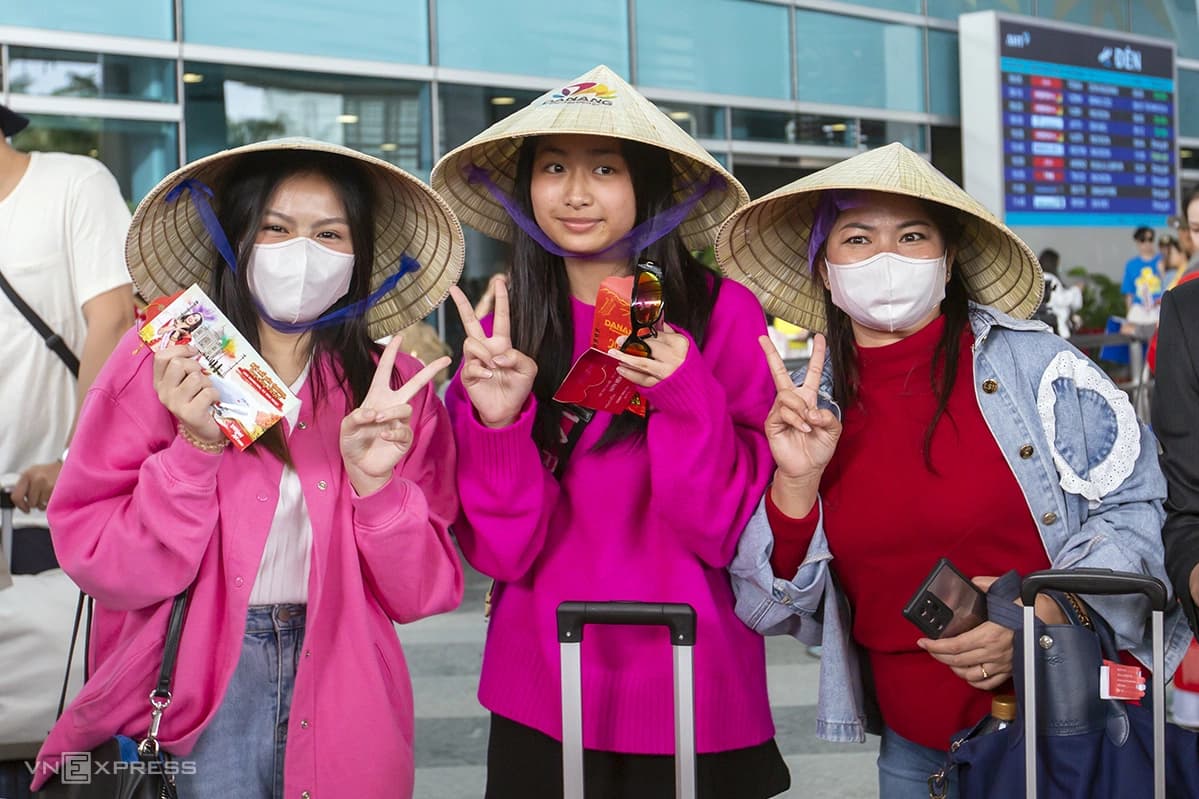Vietnam, a Southeast Asian gem known for its lush landscapes, vibrant cities, and rich cultural tapestry, has been witnessing a remarkable resurgence in international tourism. In the post-COVID-19 era, the number of international tourists to Vietnam has steadily increased, turning the country into one of Asia’s hottest travel destinations. This article will explore the factors behind this growth, analyze the statistics, assess the impact on the local economy and culture, and provide a future outlook for the tourism industry in Vietnam.

The Rising Number of International Tourists to Vietnam: A Post-Pandemic Travel Phenomenon
The Comeback of Vietnam’s Tourism Industry
Following a devastating blow from the COVID-19 pandemic, Vietnam’s tourism sector experienced an impressive revival starting in late 2022 and continued strong momentum throughout 2023 and into 2024. With borders reopened and restrictions eased, the number of international tourists to Vietnam began to soar.
According to data released by the Vietnam National Administration of Tourism (VNAT), the country welcomed over 12.6 million foreign visitors in 2023, a staggering jump compared to the 3.6 million recorded in 2022. This significant increase was not just a sign of recovery—it was a testament to Vietnam’s enduring appeal as a travel destination.

The Comeback of Vietnam’s Tourism Industry
Key Source Markets Driving Growth
One of the major driving forces behind the rising number of international tourists to Vietnam is the resurgence of key source markets. Tourists from South Korea, China, Japan, the United States, and Europe have returned in large numbers. Here is a brief overview of the top contributors:
-
South Korea remains the largest source of international visitors, accounting for nearly 30% of total arrivals.
-
Chinese tourists have made a strong comeback, especially after China lifted travel restrictions in early 2023.
-
U.S. and European tourists continue to be attracted by Vietnam’s affordability, historical attractions, and natural beauty.
-
Russian tourists, particularly those seeking tropical escapes, have also contributed to the tourism rebound.

Key Source Markets Driving Growth
Factors Attracting International Tourists to Vietnam
Natural Beauty and Diverse Landscapes
Vietnam offers a diverse range of breathtaking landscapes—from the terraced rice fields in Sapa and the limestone karsts of Ha Long Bay to the sandy beaches of Da Nang and the peaceful Mekong Delta. Nature lovers and adventure seekers are drawn to Vietnam for its unique geography and outdoor experiences.
Rich Cultural Heritage
Vietnam’s long history and multicultural influences make it a captivating cultural destination. Tourists are fascinated by the traditional festivals, ancient temples, colonial architecture, and ethnic minority communities that offer immersive cultural experiences.
Affordability and Value for Money
One of the most compelling reasons behind the increasing number of international tourists to Vietnam is the affordability. From accommodations and food to transportation and entertainment, travelers find excellent value for their money.
Improved Infrastructure and Connectivity
Vietnam has significantly invested in tourism infrastructure over the last decade. New international airports, upgraded highways, and high-speed rail projects have improved accessibility. Cities like Hanoi, Ho Chi Minh City, and Da Nang are now more connected than ever before.
Welcoming Policies and Visa Reforms
To attract more international tourists, Vietnam has introduced a series of visa waivers, e-visa extensions, and simplified entry procedures. As of 2024, citizens from over 80 countries can apply for e-visas, making Vietnam a convenient destination for global travelers.

Factors Attracting International Tourists to Vietnam
Popular Destinations Among International Tourists
The surge in the number of international tourists to Vietnam has been spread across various popular destinations, each offering its own unique charm:
-
Hanoi: The capital city is a blend of old-world charm and modern vitality, with must-visit sites like Hoan Kiem Lake, the Old Quarter, and the Temple of Literature.
-
Ho Chi Minh City: A bustling metropolis rich in history, nightlife, and cuisine.
-
Ha Long Bay: A UNESCO World Heritage Site renowned for its emerald waters and thousands of limestone islands.
-
Hoi An: Known for its well-preserved Ancient Town, colorful lanterns, and culinary delights.
-
Da Nang and Nha Trang: Ideal for beach lovers and resort vacationers.
-
Sapa and Ha Giang: Mountainous regions perfect for trekking and cultural exploration.
Economic and Cultural Impact of International Tourism
The growing number of international tourists to Vietnam has had a profound impact on the country’s economy and society.
Economic Benefits
-
Job Creation: Tourism supports millions of jobs, especially in hospitality, transportation, and local services.
-
Revenue Generation: In 2023, tourism revenue exceeded $27 billion, contributing significantly to Vietnam’s GDP.
-
Boost to Local Businesses: Hotels, restaurants, souvenir shops, and tour operators benefit directly from foreign spending.

Economic and Cultural Impact of International Tourism
Cultural Exchange and Preservation
While tourism promotes cultural exchange, it also fosters a renewed interest in preserving traditional arts, crafts, and customs. Initiatives to maintain cultural integrity while offering authentic experiences have gained traction in both rural and urban areas.
Challenges and Sustainability Issues
Despite the booming numbers, the increase in international tourists to Vietnam also brings several challenges:
Over-tourism in Certain Areas
Popular destinations like Ha Long Bay and Hoi An face issues such as overcrowding, environmental degradation, and loss of authenticity. Proper crowd management and tourism zoning are essential.
Environmental Concerns
Tourism can strain natural resources, especially water and waste management systems. Efforts to implement green tourism practices, such as eco-tourism and carbon offsetting, are crucial for sustainab

Challenges and Sustainability Issues
Cultural Dilution
Commercialization of local culture for tourism purposes may lead to a loss of authenticity. Balancing development with cultural preservation is a complex but necessary task.
Government Strategies to Enhance International Tourism
Recognizing the economic potential of tourism, the Vietnamese government has rolled out comprehensive strategies to promote and sustain growth:
-
Marketing Campaigns: “Vietnam – Timeless Charm” and “Live Fully in Vietnam” have helped boost the country’s global image.
-
Public-Private Partnerships: Collaboration between local authorities and private enterprises has accelerated infrastructure and service improvements.
-
Sustainable Tourism Development Plans: Initiatives focusing on responsible tourism, waste reduction, and community-based travel experiences are gaining attention.
Future Outlook: What Lies Ahead?
As the world continues to normalize post-pandemic, the number of international tourists to Vietnam is projected to exceed 18 million by 2025. With ongoing investments in infrastructure, digital transformation in tourism services, and a continued focus on sustainability, Vietnam is well-positioned to become a leading destination in Asia.
Key trends to watch:
-
Rise of Digital Nomads: Vietnam is becoming a hotspot for remote workers due to its affordable living and strong internet infrastructure.
-
Luxury Tourism Growth: High-end resorts and wellness retreats are on the rise, catering to affluent travelers.
-
Adventure and Experiential Travel: More tourists seek off-the-beaten-path experiences such as motorbike tours, caving, and homestays in ethnic villages.
The impressive rise in the number of international tourists to Vietnam marks a new chapter for the country’s travel and hospitality industry. With its natural allure, cultural richness, improved accessibility, and government support, Vietnam is no longer just a hidden gem—it’s a must-visit destination on the global tourism map.
As tourism continues to grow, balancing economic gain with environmental protection and cultural preservation will be key to ensuring long-term sustainability. Whether you’re a backpacker, a cultural enthusiast, or a luxury traveler, Vietnam has something to offer—and the world is finally taking notice.
